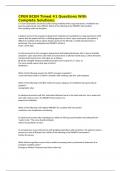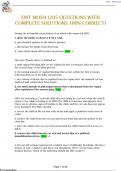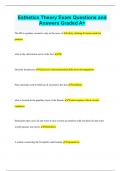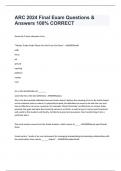Exam (elaborations)
GEOG 203 Final Exam Questions With Verified Answers.
- Course
- Institution
GEOG 203 Final Exam Questions With Verified Answers. physiognomic classification - answer- Based on functional + morphological attributes - Groups plants simply upon similarities in structure or life form - e.g. height, leaf shape, branching 2 individuals may have similar structure, but be gen...
[Show more]









